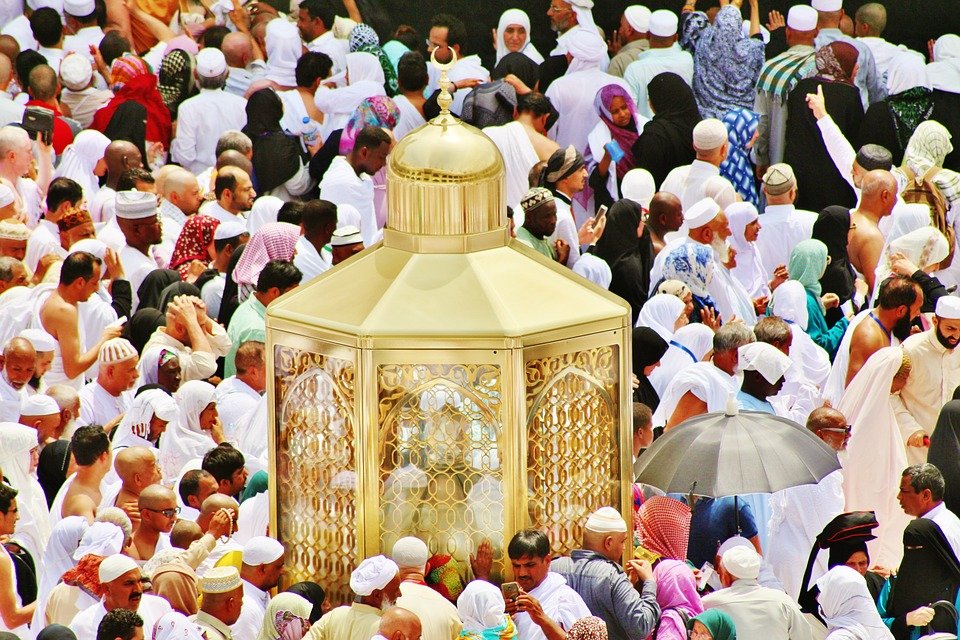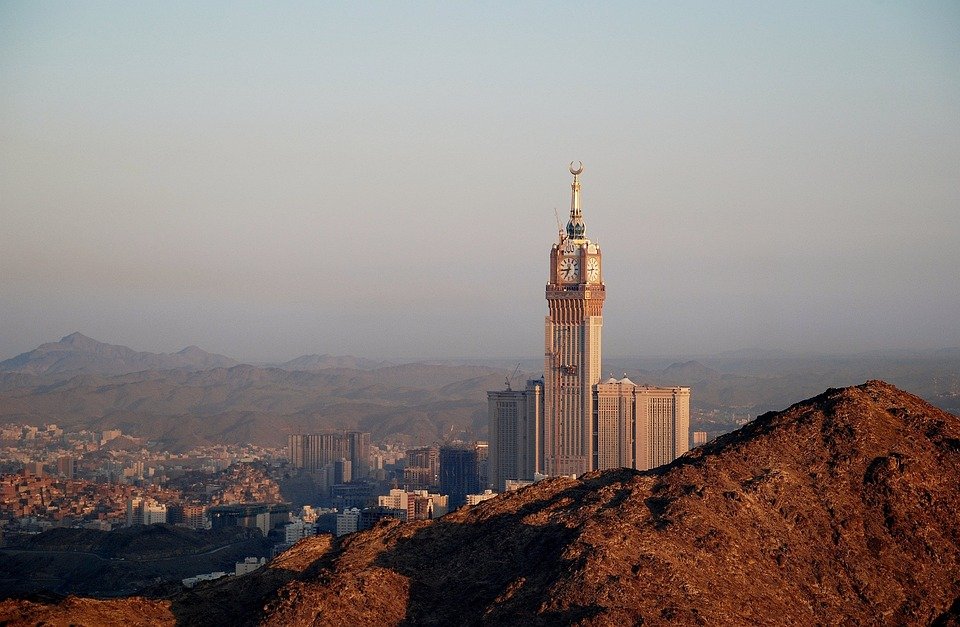You are here to read: Why Is Niqab Not Allowed in Hajj: Understanding the Rules – A Thoughtfully Written Guide Offering Spiritual Wisdom and Travel Advice for Every Pilgrim who is going on holy journey of Hajj or Umrah.
In this article, we will explore the critical question of “why is niqab not allowed in Hajj.” This topic holds particular significance for many Muslims who wish to understand the guidelines that govern one of the most important pilgrimages in Islam. The prohibition of niqab during Hajj is rooted in the need for identification and unity among pilgrims. I believe that this makes it essential for us to understand the reasoning behind these rules, not just for compliance, but to foster a sense of community during this sacred experience. By reading on, you will obtain a comprehensive guide to the policies regarding niqab at Hajj.
In my opinion, understanding “why is niqab not allowed in Hajj” is crucial for a fulfilling pilgrimage. It ensures that all pilgrims can engage in the rituals without any confusion or misunderstanding. With over nine years of experience in providing guidance on Umrah and travel to Makkah and Madinah since 2016, we have the expertise to clarify these important rules for you. It is vital to grasp the significance of these regulations, as they help maintain order and respect during the rituals that draw millions of believers from around the world. Together, let’s explore this important topic further.
Why Is Niqab Not Allowed in Hajj: Understanding the Rules
What is Hajj?
Hajj is one of the most significant events in the Islamic faith. It’s an annual pilgrimage to the holy city of Makkah in Saudi Arabia. Millions of Muslims all over the world travel to participate in this spiritual act. This journey is full of rituals and ceremonies that connect participants with their faith and community. Every Muslim is expected to perform Hajj at least once in their lifetime, provided they have the means to do so.
The act of Hajj is performed during the month of Dhu al-Hijjah, the last month of the Islamic calendar. Pilgrims engage in various activities like walking around the Kaaba seven times and standing at Arafat. These acts symbolize unity, equality, and submission to Allah. The experience is deeply spiritual and fulfilling, making it a crucial part of a Muslim’s life. Yet, certain rules must be followed to maintain the sanctity and harmony of this sacred event, one of which involves clothing regulations.
What is a Niqab?
The niqab is a type of face covering worn by some Muslim women. It leaves only the eyes visible and is often part of a traditional outfit. Many women wear it as a sign of modesty and piety. It varies in style and fabric, reflecting individual choice and cultural background. In different parts of the world, it can be found in various colors and designs, making it quite diverse.
Wearing the niqab is a personal choice for many women who believe it aligns with their faith and identity. However, wearing it during Hajj is currently not allowed, stirring discussions about the rules governing this pilgrimage. Understanding the reasons behind such regulations can be enlightening. It can help clarify misconceptions and foster a deeper appreciation for the principles of Hajj.
The Importance of Uniformity in Hajj
Uniformity in clothing is a key aspect of the Hajj experience. When pilgrims wear the same attire, typically the simple Ihram garments, it promotes a sense of equality among everyone. Rich or poor, everyone dons the same simple white clothing, symbolizing the idea that in the eyes of Allah, all are equal. This aligns with the central teachings of Islam, emphasizing humility and unity among believers.
You're at the middle of this awesome post at AirlinkHajjandUmrah.com through: Why Is Niqab Not Allowed in Hajj: Understanding the Rules. Keep reading, it gets better!
By not allowing the niqab, authorities aim to maintain this uniformity. When people wear different styles of clothing, it may distract from the spiritual message of Hajj. The focus should be on personal reflection and connection with Allah, rather than on one’s individual appearance. It’s interesting how different cultures approach modesty, but in the sacred setting of Makkah, a shared outfit enhances the spiritual experience for all pilgrims.
Rules Set by Authorities
The Saudi authorities establish rules to ensure that Hajj is conducted smoothly and sincerely. The restrictions concerning the niqab stem from a desire to minimize distractions and maximize spiritual focus. It’s crucial that everyone participates in the various rituals without any barriers between them.
These guidelines aim not to criticize individual beliefs but rather to uphold the sanctity of the pilgrimage. Pilgrims follow a specific order of rituals, and deviations can disrupt the flow of these sacred activities. Awareness of such rules can help prepare potential pilgrims for what to expect and how to engage respectfully during the event.
Understanding the Purpose of Hajj
The primary goal of Hajj is to seek forgiveness. Pilgrims aim to connect deeply with Allah, asking for guidance and compassion. This relationship is personal and profound, often filled with emotions like awe and humility. Wearing simple clothing helps to strip away worldly distractions, helping pilgrims to focus solely on their prayers and reflections.
Entering this spiritual state is essential for the overall experience. When individuals wear diverse types of clothing, it can create a sense of separation. Everyone is there for similar reasons, seeking solace and spiritual rejuvenation. By adhering to a dress code, pilgrims can immerse themselves entirely in the rituals and atmosphere, uniting as one in faith.
Alternatives to the Niqab During Hajj
For women who observe high standards of modesty and prefer to cover their faces, there are alternatives that still comply with Hajj regulations. They can choose to wear a scarf or shawl that covers their head and neck without obstructing their face. These options provide a balance between personal beliefs and adherence to the rules of pilgrimage.
This flexibility allows individuals to express their sense of modesty while respecting the guidelines set forth for the pilgrimage. It enables them to feel comfortable without compromising the communal spirit of Hajj. Finding solutions that fit within the established rules can enrich the experience for many women participating in the pilgrimage.
Conclusion: Embracing the Spirit of Hajj
In the end, understanding why the niqab is not allowed during Hajj helps to highlight the essence of this sacred pilgrimage. It’s not merely about clothing; it’s about unity, humility, and spiritual awakening. The rules serve a larger purpose, aiming to create an environment where all can focus on their connection with Allah.
So if you find yourself preparing for Hajj, remember that the experience is about much more than what you wear. It’s about the shared journey, the prayers offered, and the bonds formed with fellow believers. Embracing the guidelines allows for a more profound connection and a chance to truly experience the magnificence of this holy event.
That wraps up Why Is Niqab Not Allowed in Hajj: Understanding the Rules. Thanks for sticking with us till here! Share this: Why Is Niqab Not Allowed in Hajj: Understanding the Rules with your friends.
Check our homepage at Air Link Hajj & Umrah for more awesome updates.
Some interesting posts are: 1: Umrah Mubarak, 2: When is Umrah closed 2026?, 3: When does Umrah start after Hajj 2026?
Mushu, an experienced Saudi Arabia traveler and writer, shares insightful tips and spiritual reflections to enhance Hajj and Umrah journeys for fellow pilgrims. He has been to Makkah and Madina from 2016 to 2023 many times and his posts will reflect this.







